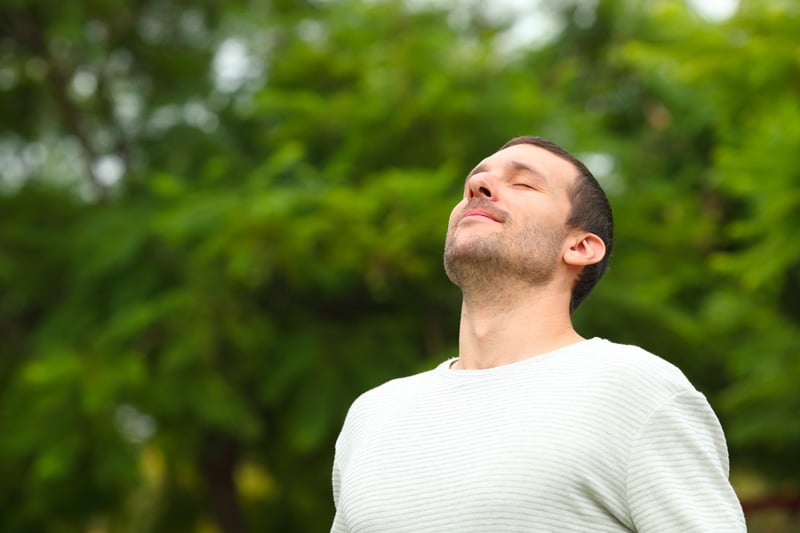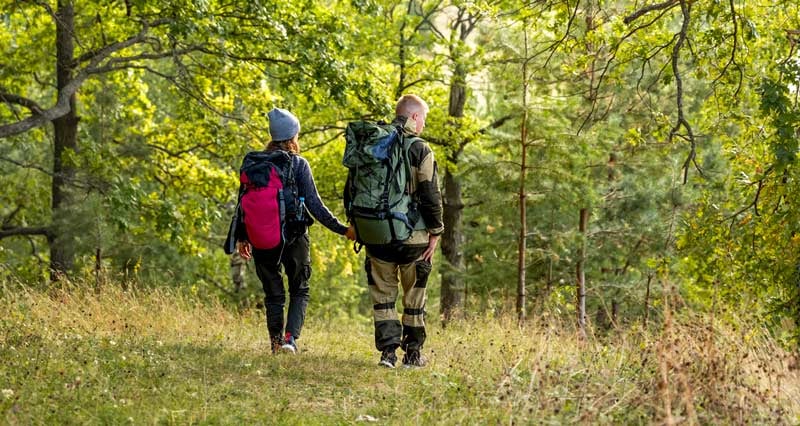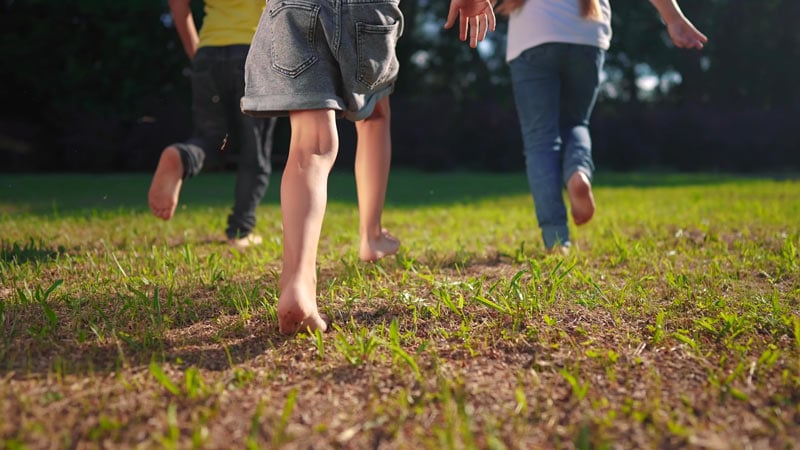Laica Blog
Wellness for body and mind: the benefits of contact with nature
Sometimes, the stress and frenetic pace of life can take over our days. And it is often our physical and mental health which bears the brunt of this burden.
This is why there has been a growing awareness in recent years of the importance of personal well-being, both for our bodies and our minds. It has become a priority in our society, something which affects individuals and communities.
In this new LAICA blog article, we want to explore a cure which is often overlooked but which is incredibly effective at combating this stress and physical toll: contact with nature and its positive effect on our overall well-being.
1 - Environment: a haven of peace
 We live in a time when we are constantly connected, immersed in a digital world which subjects us to a vast amount of stimuli. A “multi-link” environment which very often increases our stress levels and, at the same time, reduces our concentration span. This creates a sense of distance within us what is known as peace of mind, a feeling of calm or balance.
We live in a time when we are constantly connected, immersed in a digital world which subjects us to a vast amount of stimuli. A “multi-link” environment which very often increases our stress levels and, at the same time, reduces our concentration span. This creates a sense of distance within us what is known as peace of mind, a feeling of calm or balance.
Where could we find a powerful natural remedy? It’s simple, surround yourself with nature.
Take a stroll through the park, spend time in a forest or just enjoy a beautiful natural landscape such as a lake or a beach: these experiences can promote a feeling of calm and reduce anxiety. It is sometimes called “green wellness” and one thing is for sure: it often only takes a few minutes (although the longer the better) in close contact with the natural environment to find yourself in a haven of peace.
Scientific studies have shown that contact with nature (even just 120 minutes per week) can reduce levels of cortisol, the stress hormone, in our bodies and give us a renewed feeling of energy and calm.
2 - Wellness of body and mind: a deep connection

When we talk about contact with nature, we are talking about the combination of two types of well-being.
The physical well-being that contact can provide is tangible and real. Consider, for example, the feeling of bare feet on grass in a park, hands brushing over leaves or sinking into the snow, the way your face and hair feels revitalised after contact with sea water or a summer storm. And then there is mental well-being, that feeling of renewed freedom, peace, and calm which increases in our minds with the passing of time. These two forms of “well-being” are highly interlinked. One stimulates the other. One enhances the other. And together they contribute to improving our overall health.
Which means that sport and physical activity outdoors obviously offer the perfect combination for generating equilibrium and well-being for body and mind. Activities such as hiking, cycling and outdoor yoga, to give just a few examples, not only get you moving and enable us to work out your stress through physical activity, they also offer the chance to get some fresh air (maybe even sea or mountain air) and top up vitamin D levels in the sunshine.
Furthermore, we must not forget that we have five senses and they are all stimulated by contact with nature. All of them, at the same time. The relaxing sound of the wind in the trees, the fresh smell of the land and the vivid colours of the landscape rather than a computer screen can be just the tonic for our central nervous systems, relieving tension in our muscles. And as a direct result we find it easier to be in a good mood!
3 - Contact with nature must be a daily routine

As we have said many times, exercise is very important. It is good for our personal health and it improves our mood, especially if we do it as a group. But the well-being of body and mind which we are talking about needs to be protected every day. A study by the Barcelona Institute for Global Health found that people who spend their childhood playing outdoors and riding a bicycle had lower levels of depression, nervousness and fatigue in adulthood. Which is fantastic!
Exercising two or three times per week is a positive habit but the contact with nature that we are encouraging must be regular, continuous and daily. It is crucial to build this practice into our daily lives, and those of the people we care about. And it is so easy! Ride a bike for all short journeys (and yes, even when it’s raining, a bit of rain won’t hurt you!), "get lost" deliberately, extending a ride to go through a park you like, stopping to savour the smells, finding time to enjoy the shade of a tree in summer or getting your hands dirty by growing fruit and vegetables in the garden (even if it’s only small) with the children.
But there is so much more we could do. Extend this green-wellness approach to the workplace in our daily working lives, if possible (and in many cases it is possible but we don’t consider it). Companies are increasingly recognising the importance of promoting the well-being of their employees through initiatives that encourage contact with nature. Outdoor fitness programmes, green spaces in offices and environmental volunteering schemes are just some of the many ways to create a healthier and inspiring working environment. This environment which is a source of stress, tension and pressure could (should?) find a new equilibrium, a new way of “being well”. A study by the ACS (American Chemical Society) found a direct correlation between people’s mental health and the presence of green areas in the immediate vicinity of their homes and workplaces.
4 - Conclusions
To conclude, the well-being of our bodies and minds is a goal we can achieve through the simple action of connecting with nature. The natural environment offers a haven of peace, encouraging mental relaxation and providing numerous physical benefits. By incorporating contact with nature into our daily lives we can not only improve our personal health, we can also create a more balanced and productive environment for companies and for the communities where we live.






It's your turn, leave your comment!
Get the latest from the Laica blog